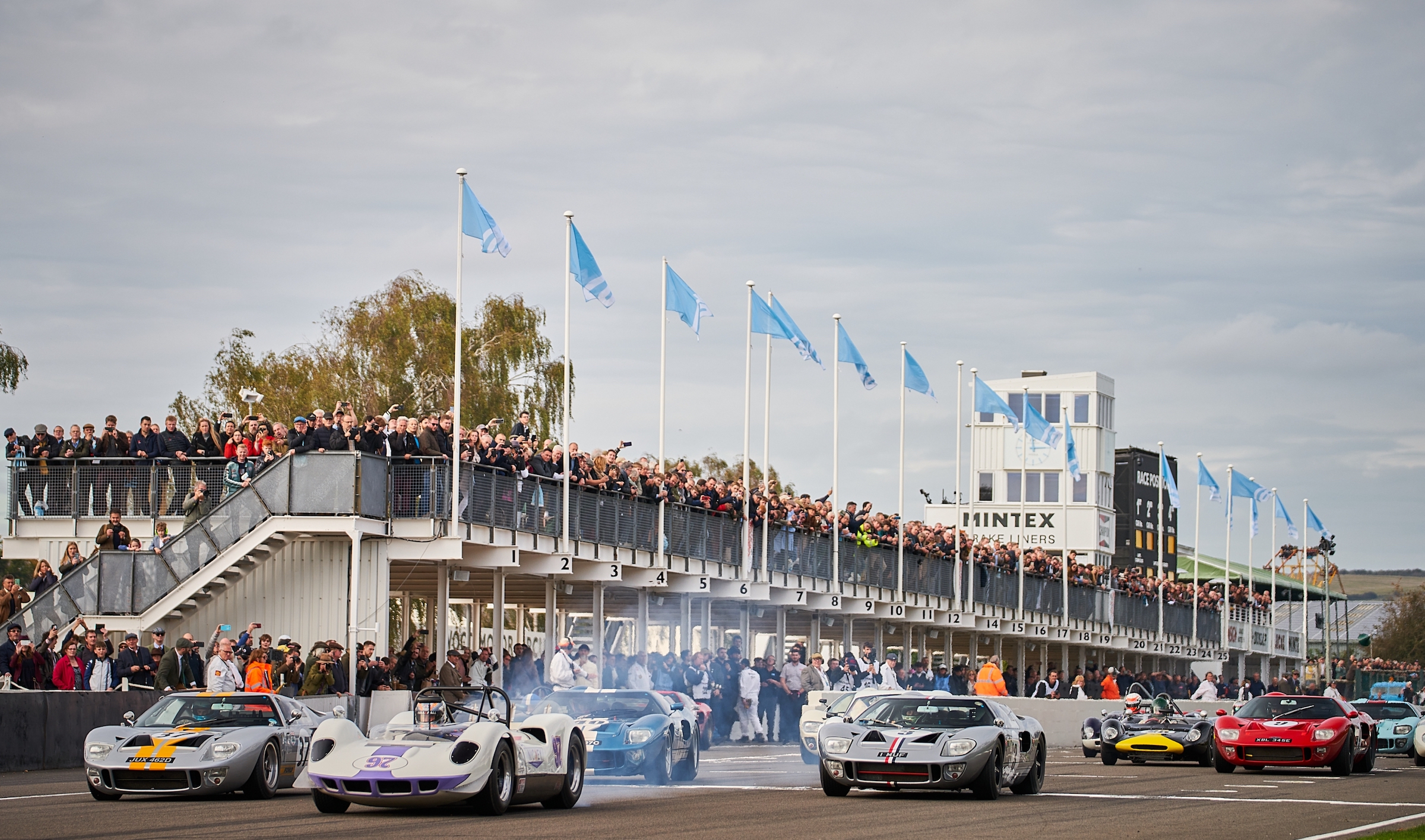The influence the Goodwood estate imparts from a sleepy corner of one of England’s most rural counties is felt across the world. Talk to any car enthusiast, from Vancouver to Tokyo, and attendance at a Goodwood event will surely be on their bucket list. It is hard to imagine car culture in the UK – or anywhere – without Goodwood.
And yet, for three quarters of the 20th century no cars raced on the Goodwood tracks, and the name was known to most of the general public solely as a venue for horse racing. The conversion of the estate into a motoring mecca was started by the 9th Duke, known to most simply as Freddie March, who established the motor racing circuit (where racing took place from 1948 to 1966) but it is the current 11th Duke, Charles Gordon-Lennox, who created the estate’s three current annual flagship events: the Festival of Speed (started in June 1993), the Goodwood Revival (1998) and the Members’ Meeting (2014).
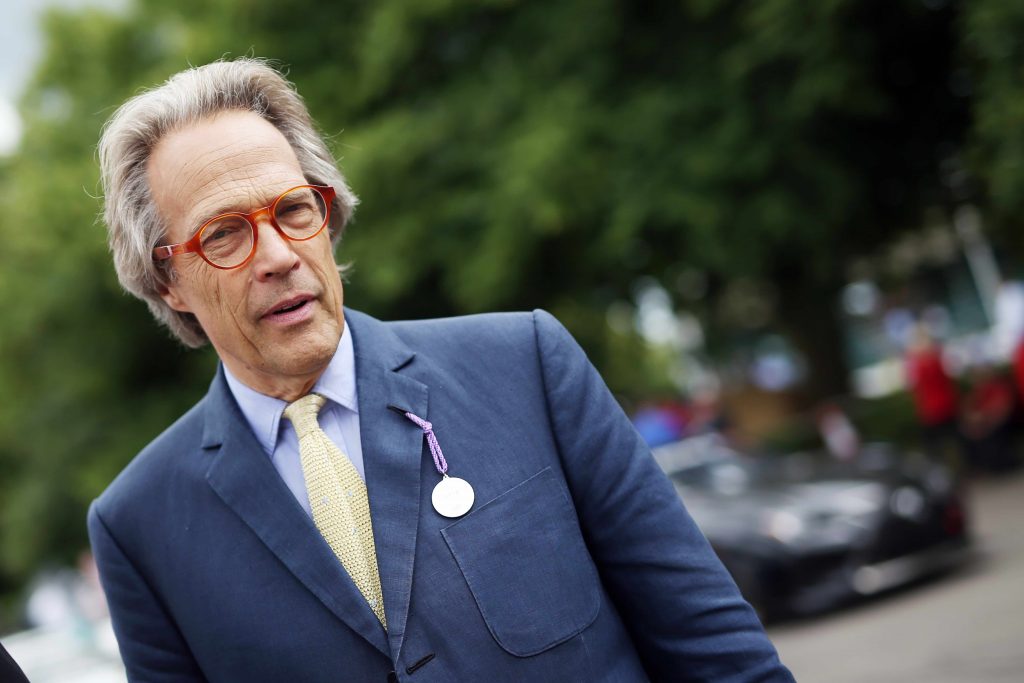
Goodwood has become such a regular part of motoring culture that we almost forget what a phenomenon it was when it reopened. From the very start, Goodwood was different to ‘regular’ motor racing meetings: when the first Silverstone International Historic Festival (now known as the Silverstone Classic), took place in 1990 Motor Sport reported that it ‘lacked the atmosphere of the Nürburgring’ and that the infield had ‘several rides for kids’. Its photographs showed some great racing cars, but sparsely-occupied stands and lots of sterile barriers. Compare this to eight years later, when the same magazine named the first Goodwood Revival as ‘The Motorsport Event of the Decade’ on its cover. Even that very first Revival meeting attracted 80,000 visitors, and it is now a 150,000-person sell-out event that, according to a recent study by the London School of Economics, helps Goodwood attract more than a million people to the UK each year, generating £500m for the country’s economy and £350m to the local area. And, for the lucky few who actually race at the Goodwood circuit, there’s a bonus: their cars are likely to be worth more just for the association with this hallowed asphalt.
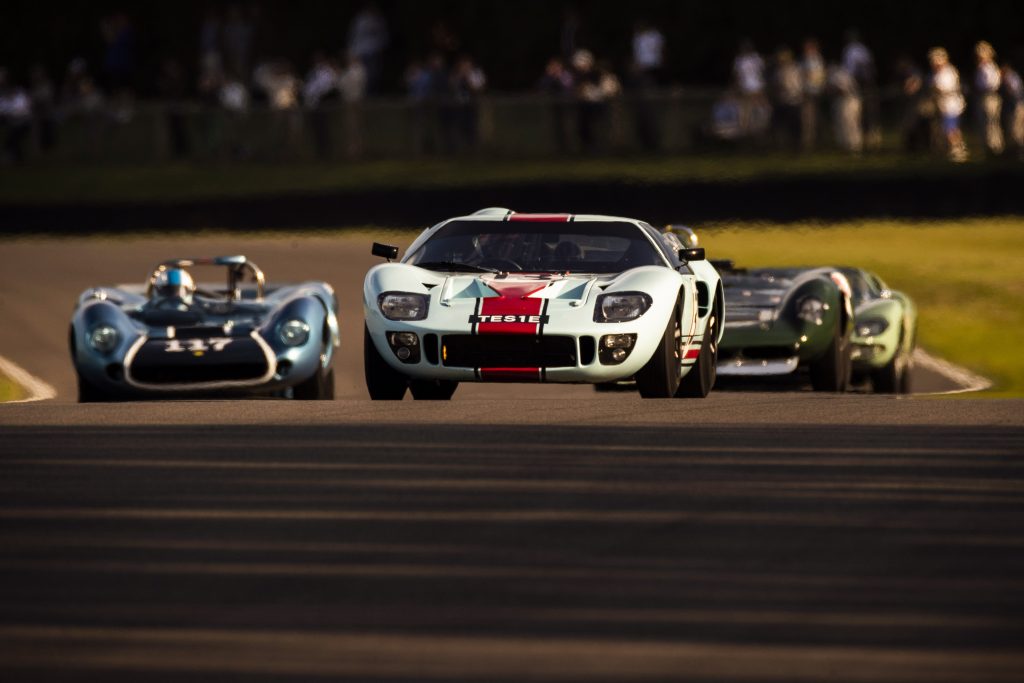
“We have these great looking events, enthusiasts taking their cars somewhere exotic and having a wonderful time,” James Knight, Bonhams Motoring Group Chairman, told me. “It was only natural that others wanted to participate. But you needed an eligible car to do so and the cars already competing – and being seen to do well – became very much in demand. They already had acceptance and the cars winning, or placed, became the ‘must haves’. It was the best form of advertising those cars. And this of course pushed up the price. Auction houses like Bonhams would therefore regard a race car’s recent success as a marketing tool to help sell the car. It very much becomes part of the car’s provenance.”
Recent auction results show the inflationary power of a Goodwood scrutineering sticker: in April 2019 a Riley One-Point-Five with Revival history made £28,750, nearly three times the top UK Hagerty Price Guide value of £10,200 for the model. At the 2019 Bonhams Revival sale, an Austin A35 doubled its Hagerty Price Guide top figure selling for £26,450 and a 1965 BMW 1800 with history sold for £58,650, well over the top Guide price of £18,500. The most extreme example was the Ford Galaxie that sold in 2017. A regular front-runner at the Goodwood Revival and ex-Jack Sears car, it smashed its pre-sale estimate of £180,000 to £220,000, selling for £471,900. That’s a huge £458,200 over the top Hagerty price.

Of course, all that glitters is not always gold. Many cars are sold as ‘Goodwood eligible’, having raced in period prior to 1966, but that’s not the same as being an entrant. “Eligibility is one thing, but cars only race at Goodwood if they’re invited to do so by the Duke,” explains Gary Axon, who has been responsible for selecting cars for a range of Goodwood events over many years. “There are many factors that go into the decision regarding what appears on track, and eligibility is just one.”
So, what is this secret sauce that makes Goodwood so different? Commentators often mention the circuit itself: Britain’s other airfield motor racing venues like Silverstone and Thruxton had evolved with the times, growing swathes of Armco barriers, run-off areas and catch fences, from 1966 to 1996 when redevelopment started, whereas Goodwood was preserved in an unmolested state.
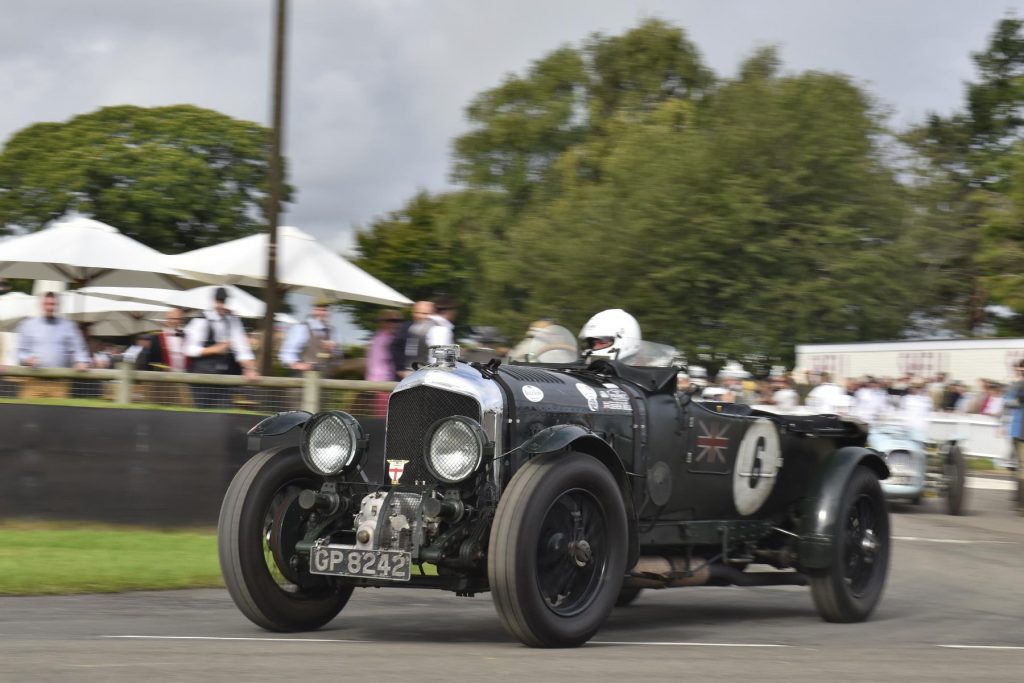
“Since the chicane was added in time for the 1952 season, the line of the circuit hasn’t been changed at all,” a Goodwood spokesperson said. “Although it looks the same, and the driving experience is the same, it has been, and continues to be, constantly updated, with new tyre walls, additional gravel and tarmac run-off areas, metal fencing, a new surface etc. Our aim is to make these changes in ways that don’t spoil the aesthetic of the circuit, so the fact people describe it as ‘unchanged since the 1960s is a compliment.”
But preserving the circuit in a suspended state does not account for Goodwood’s success: there are plenty of historic racing venues around the world where the old and the new combine. Gordon-Lennox’s genius was to create a theme that continues to bind everything the estate does to this day. He knew that the ‘Goodwood experience’ had to be different, to be special. At his direction, the circuit, rather than being restored to a specific point in its history, was rebuilt to reflect the best parts of each era. So, concrete barriers and rusting corrugated iron were removed, but spectator embankments, an open paddock, the iconic pit lane and clock tower were restored.
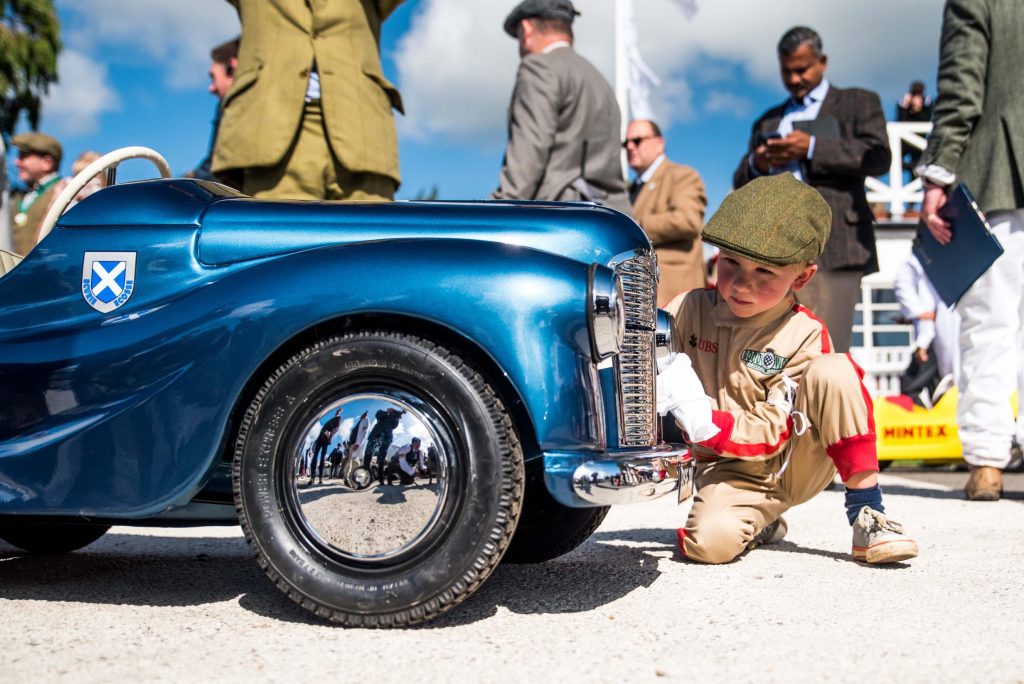
Then, once the set is dressed, the actors are called on stage. At the forefront are the racing drivers, who flock to be part of the show and who love the memories the location evokes. “These events are not just about the spectacle of seeing these incredible cars perform and race wheel to wheel,” explains Anthony Reid, the ex-BTCC Masters and Japanese F3 champion who serves as one of four Goodwood Members’ Meeting House Captains. “The public can get up close to view the machinery in the paddocks and rub shoulders with the likes of Emerson Fittipaldi, Jackie Stewart, Jenson Button, Niko Rosberg and many, many more in a way that is impossible at any other event including F1. The huge crowds, the hospitality, the social scene… the shops, the aeroplanes, the parties and Hollywood stars that attend are unparalleled at any other event anywhere else in the world.”
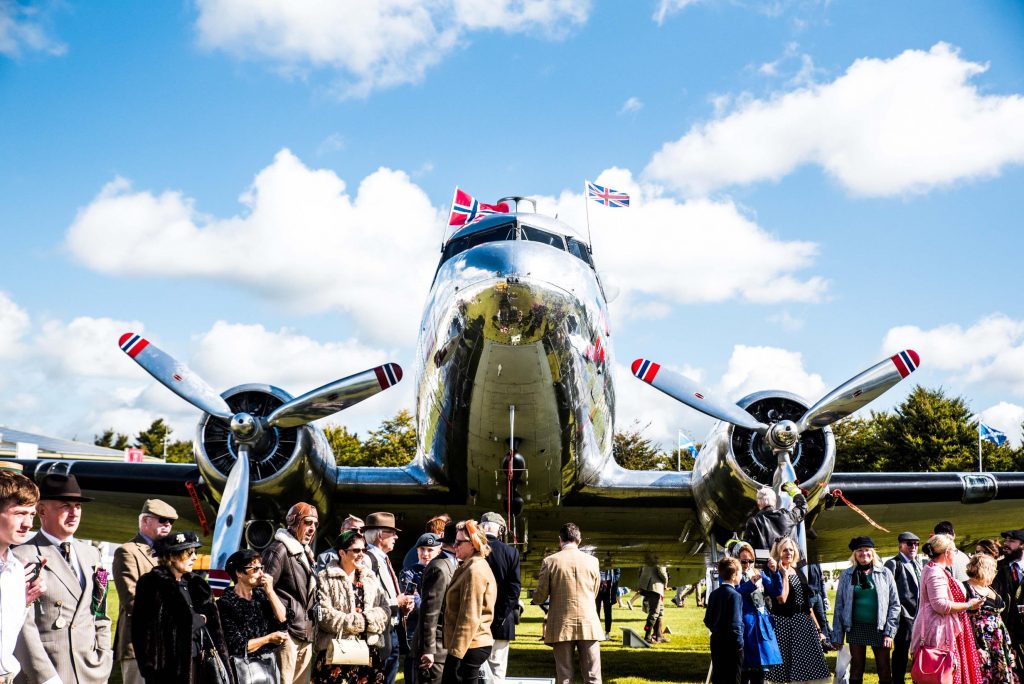
Then there are the extras. For every Revival meeting, the Goodwood Actors Guild recruits hundreds of performers who mix with the crowds, creating flash performances in character as everything from 1950s taxi drivers and 1940s acapella singers to groups of ‘Teddy Boy’ greasers who face off with each other, combs at the ready. Everything is curated, everything orchestrated: VIP transport is by a volunteer fleet of classic cars and even the official busses from the local train station are veteran 1950s and ‘60s machines. The visitors become part of the show: almost everyone wears period dress, and many go to extraordinary lengths to achieve authenticity: the 1950s pop-up hair salons are booked out months in advance, and the local town of Chichester has shops dedicated to ‘Revival’ fashion.
Other events – Radwood and Luftgekühlt spring to mind – have certainly embraced this ‘curated’ concept, but not on the same scale as Goodwood. Other circuits too have launched retrospective events – since the Goodwood Members’ Meeting started in 2014 there has been a flurry of new or restored historic racing events at locations including Monza, Estoril, Nürburgring, Sebring and Zandvoort. It’s impossible to say whether Goodwood was the reason these started, but it is undeniable that it had an effect. Plus, as Dan Hughes, Director of Kinrara Consulting, Goodwood’s little-known consultation arm, told me, the Estate has actively helped a number of different circuits develop their events. Although unwilling to name specific circuits, he told me they have worked with teams developing new motoring locations including Miami, Mumbai, Toronto and elsewhere in Europe through the conception, design and development of drivers’ clubs and membership models. Hughes told me, “Almost every aspect of Goodwood’s diverse luxury lifestyle business has been asked to contribute to these prestige projects including circuit operations, membership, hospitality, F&B [food and beverage], events and guest experience. As a truly global brand in the luxury motoring and motorsport world, the association with Goodwood brings that instant recognition and respect amongst target markets.”
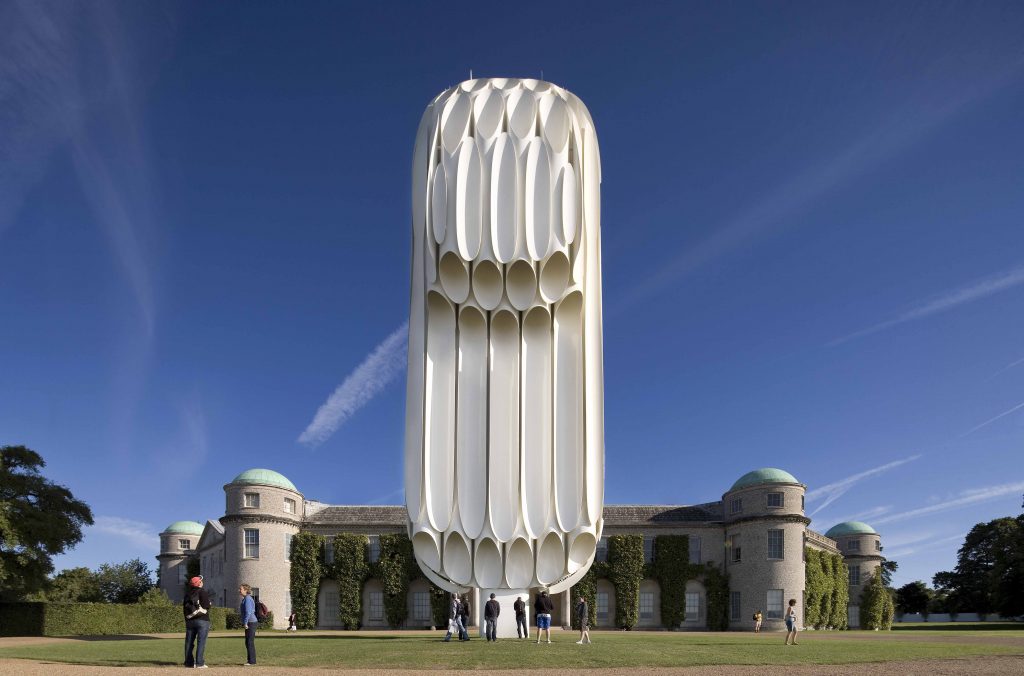
This year, all three of Goodwood’s flagship motor racing events were cancelled, but a one-off Goodwood SpeedWeek is taking place from the 16th to the 18th of October 2020. Although closed to the public, the races, demonstrations and other events will be streamed live online; in a world still reeling from COVID-19, it surely won’t compare to being in the paddock or breathing in the smell of cooked brakes and tortured tyres from the circuit’s embankments, but a Goodwood spokesperson promises it will be “filled with wheel-to-wheel racing” and “intensely interactive.” [Find all the details and a livestream, here]
And that’s the key to the Goodwood effect: although the events obviously make money, the aim has always been to satisfy the general public’s love for motoring. Under the Duke’s watchful eye, it balances the three parts of its magic formula: access (to drivers and the machines they drive), authenticity, and attention to detail.
In all its many guises, Goodwood is a place apart and long may it remain so.
Video: How to win the 2021 Hagerty Festival of the Unexceptional

